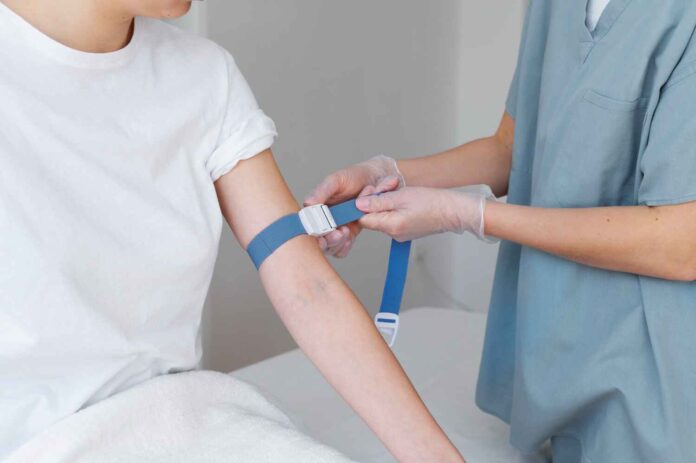As a Functional Medicine practitioner, I’ve seen firsthand the debilitating effects that osteoporosis and osteoarthritis can have on my patients’ quality of life. While conventional treatments can help manage symptoms, they often come with unwanted side effects and fail to address the underlying causes of bone loss and joint degeneration.
That’s why I’m excited to share the latest research on curcumin, a natural compound that shows tremendous promise for preventing and treating these conditions.
Curcumin is the active ingredient in turmeric, a spice used for centuries in Ayurvedic and Chinese medicine. In recent years, scientists have begun to uncover the multiple mechanisms curcumin supports bone health. The evidence is compelling:
- Curcumin supplementation has been shown to reduce bone turnover markers and increase bone mineral density in postmenopausal women with osteopenia or osteoporosis. (Kheiridoost et al.)
- In patients with knee osteoarthritis, curcumin improves pain and function while reducing reliance on pain medication (Lopresti et al.)
- Curcumin modulates inflammatory signaling pathways and immune cell activity in ways that protect against joint degeneration and bone loss (Atabaki et al.)
- A 2024 meta-analysis of 11 randomized controlled trials found that curcumin was effective for relieving pain, improving joint mobility and stiffness, and shortening medication usage in osteoarthritis patients. (Bideshki et al.)
The Mechanisms Behind Curcumin’s Bone-Protective Effects
To appreciate how curcumin exerts these beneficial effects, it’s important to understand the process of bone remodeling. Throughout our lives, bone tissue is constantly being broken down and rebuilt by specialized cells called osteoclasts and osteoblasts, respectively. In healthy bone, these processes are balanced.
However, with aging and certain chronic diseases, osteoclast activity can begin to outpace osteoblast activity, leading to net bone loss. Inflammation, oxidative stress, and hormonal changes are key drivers of this imbalance.
Curcumin targets these underlying factors through several synergistic mechanisms:
- Inhibition of osteoclast differentiation and activity: Curcumin has been shown to suppress RANKL-induced NF-κB signaling, which is critical for osteoclast formation and survival (Bharti et al.) It also stimulates apoptosis (programmed cell death) of mature osteoclasts (Ozaki et al.)
- Stimulation of osteoblast differentiation and activity: Animal and cell culture studies indicate that curcumin enhances the viability, proliferation, and mineralization of osteoblasts, likely by modulating the expression of key transcription factors and growth factors involved in osteogenesis (Bukhari et al.)
- Anti-inflammatory and antioxidant activity: Curcumin inhibits NF-κB and other pro-inflammatory signaling pathways that contribute to bone loss and joint destruction (Atabaki et al.) It also upregulates the body’s endogenous antioxidant defenses and scavenges free radicals directly (Li et al.)
The Importance of Bioavailability: Spotlight on NovaSol Curcumin
One of the major challenges with curcumin supplementation is its low bioavailability. As a lipophilic compound, curcumin is poorly absorbed in the gastrointestinal tract and rapidly metabolized by the liver. This means that only a small fraction of the curcumin we ingest reaches systemic circulation, where it can exert its beneficial effects.
Fortunately, new delivery technologies are being developed to overcome this limitation. One of the most promising is NovaSol, a patented formulation that uses micelles to encapsulate curcumin and enhance its solubility and absorption.
Pharmacokinetic studies have shown that NovaSol curcumin achieves up to 185 times higher peak plasma concentrations than standard curcumin, with a 439-fold improvement in bioavailability overall. This translates to greater biological activity at lower doses.
In a recent clinical trial, postmenopausal women with osteopenia received either 500 mg per day of NovaSol curcumin or a placebo for 24 weeks. The curcumin group experienced significant improvements in bone density at the heel, small finger, and upper jaw, while no changes were observed in the placebo group (Riva et al.)
These findings suggest that NovaSol curcumin, by virtue of its superior bioavailability, may be an especially effective form for supporting bone health. It’s the formula I recommend to my patients and use personally.
Dosing and Safety Considerations
To achieve therapeutic effects, it’s important to use a well-absorbed curcumin formulation at a sufficient dose. Clinical trials have used doses ranging from 80-1500 mg per day of optimized preparations like NovaSol curcumin (Riva et al.), nanomicelle curcumin and curcumin-phosphatidylcholine complexes (Kheiridoost et al.), (Lopresti et al.)
Importantly, curcumin has an excellent safety profile. Even at doses as high as 8 g per day, no serious adverse effects have been reported in human studies (Kheiridoost et al.) The most common side effects are mild gastrointestinal symptoms like nausea or diarrhea.
An Integrative Approach to Bone Health
While curcumin is a powerful tool for supporting skeletal health, it works best in the context of a holistic, nutrient-dense diet and lifestyle. Here’s what I recommend to my patients:
- Base your diet around whole, minimally processed foods rich in bone-building nutrients like calcium, magnesium, vitamin D, and vitamin K2.
- Engage in regular weight-bearing exercise to stimulate bone formation and improve muscle strength and balance. Aim for at least 150 minutes per week.
- Optimize vitamin D status by testing your levels and supplementing to achieve a blood level of 35-60 ng/mL.
- Consider supplementing with a bioavailable curcumin formulation like NovaSol, especially if you are at increased risk for osteoporosis or have been diagnosed with osteopenia or osteoarthritis. A dose of 500 mg per day has been shown to be safe and effective.
- Manage chronic inflammation by minimizing processed foods, optimizing sleep and stress, and addressing underlying health conditions.
The Bottom Line
Curcumin is a safe, effective, and affordable option for preserving bone density and joint health throughout life. By modulating the immune system, reducing oxidative stress, and balancing osteoblast and osteoclast activity, it targets the root causes of age-related bone and joint disorders.
When selecting a curcumin supplement, bioavailability is key. Micelle-based delivery systems like NovaSol offer a significant advantage by enhancing curcumin’s absorption and biological activity. This allows for maximal benefits at lower doses.
If you’re concerned about your bone health or osteoarthritis pain, I encourage you to talk with your healthcare provider about adding a high-quality bioavailable curcumin supplement to your preventive or therapeutic regimen. Combined with a nutrient-dense diet and bone-smart lifestyle practices, it can be a powerful ally in your quest for lifelong skeletal strength and resilience.



